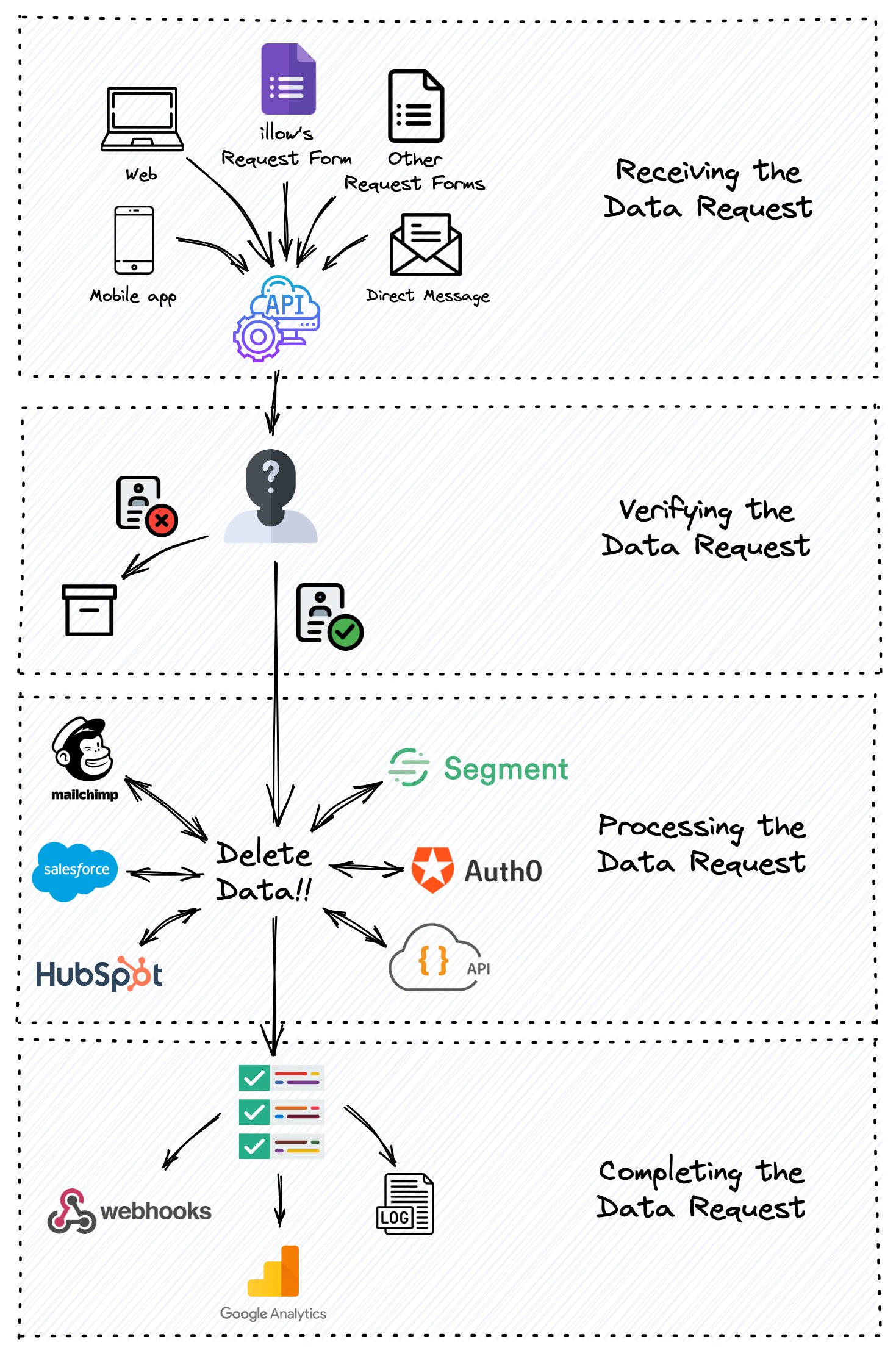Introduction
Deleting data without a process in place is the perfect recipe for failure. Having a process defined but doing all the work manually is time-consuming and error-prone.
illow provides your company with a robust pipeline to receive and execute automatically all requests for data deletion, enabling you to integrate seamlessly with any third-party or in-house custom tool.
Setting all up is easy and straight-forward. And if you find it is not, please send us an email to info@illow.io telling us why. We'd love to hear your feedback.
But first things first, let's check how exactly this Pipeline is.
The Pipeline
The Data Deletion Pipeline sets up a couple of stages and steps from receiving the request to fulfilling it. Let's go through the details.
Stages
- The Data Deletion Request is received.
- The Request goes through all verifications steps to decide whether it should be processed or rejected.
- If all verifications pass, the Data Deletion process starts. This involves calling all Data Sources asking for, well, the deletion of data.
- Once all Data Sources finish deleting data, the request is closed and an activity log and summary are provided. You can connect your system via Webhooks. to carry on with any other business operation needed.
The Request is closed, no further actions can be done, but you can still check all the activity log and summary.
We call a Data Source to the place where data relies. Since your users' data probably is stored in many places (in-house and third-parties), you will have to set up many Data Sources within your Pipeline. Don't worry, we'll go through the details later in this guide.
So, recapping:

Let's now go stage by stage. Up next, Receiving a Data Request.